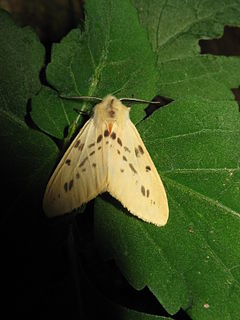
My Man Jeeves is a collection of short stories by P. G. Wodehouse, first published in the United Kingdom in May 1919 by George Newnes. Of the eight stories in the collection, half feature the popular characters Jeeves and Bertie Wooster, while the others concern Reggie Pepper, an early prototype for Bertie Wooster.

Gasteracantha is a genus of orb-weaver spiders first named by Carl Jakob Sundevall in 1833. The females of most species are brightly colored with six prominent spines on their broad, hardened, shell-like abdomens. The name Gasteracantha is derived from the Greek gaster (γαστήρ), meaning "belly, abdomen", and akantha (άκανθα), meaning "thorn, spine". Spiny-backed orb-weavers are sometimes colloquially called "crab spiders" because of their shape, but they are not closely related to the true crab spiders. Other colloquial names for certain species include thorn spider, star spider, kite spider, or jewel spider.

The Uncollected Wodehouse is a collection of early newspaper and magazine articles and short stories by P. G. Wodehouse. First published in the United States on October 18, 1976 by Seabury Press, New York City, it contains 14 short stories. Five of the stories had appeared in the United Kingdom in the 1914 collection The Man Upstairs. All had previously appeared in UK. periodicals between 1901 and 1915; some had also appeared in the U.S. Five short items are included from UK magazines of the 1900–06 period; ten items from 1914–19, nine from the U.S. Vanity Fair magazine.

The Spilosomina are a subtribe of tiger moths in the tribe Arctiini, which is part of the family Erebidae.

Hypena is a genus of moths in the family Erebidae. It was first described by Franz von Paula Schrank in 1802. These non-migratory moths overwinter as pupae and almost never come to bait as adults.

The Strand Theatre was an early movie palace located at 1579 Broadway, at the northwest corner of 47th Street and Broadway in Times Square, New York City. Opened in 1914, the theater was later known as the Mark Strand Theatre, the Warner Theatre, and the Cinerama Theatre. It closed as the RKO Warner Twin Theatre, and was demolished in 1987.

Lemyra is a genus of tiger moths in the family Erebidae. The genus contains many species from East and South Asia, Sundaland and Australia. It was described by Francis Walker in 1856.

Glyphodes is a genus of moths of the family Crambidae described by Achille Guenée in 1854.
Plum Stones is a set of 12 volumes of uncollected short stories by P. G. Wodehouse. All 25 stories were previously published in magazines, but not published in book form in the UK. The volumes were published posthumously between 1993 and 1995 in the UK by Galahad Books. The first two volumes were published in 1993, the following six in 1994, and last four in 1995.

Lemyra inaequalis is a moth of the family Erebidae first described by Arthur Gardiner Butler in 1879. It is found in Japan and Korea.

Phiala is a genus of moths in the family Eupterotidae.
Lemyra anormala is a moth of the family Erebidae. It was described by Franz Daniel in 1943. It is found in China, Burma and Vietnam.
Lemyra eximia is a moth of the family Erebidae. It was described by Charles Swinhoe in 1891. It is found in southern India.
Lemyra flammeola is a moth of the family Erebidae. It was described by Frederic Moore in 1877. It is found in China.
Lemyra jankowskii is a moth of the family Erebidae. It was described by Oberthür in 1881. It is found in China, south-eastern Russia and the southern Kuriles. The species is named after the collector Michał Jankowski from whose specimens it was described.

Lemyra stigmata is a moth of the family Erebidae. It was described by Frederic Moore in 1865. It is found in China, Pakistan, India, Nepal, Bhutan, Myanmar, Thailand and Vietnam.

Oxyopes is a genus of lynx spiders found worldwide. It includes arounds 300 species and is classified under the lynx spider family Oxyopidae. Like other lynx spiders, they are easily recognizable by the six larger eyes arranged hexagonally on top of the head (prosoma), with the remaining smaller two eyes in front. They are also characterized by long spine-like bristles (setae) on their legs. They are ambush predators, actively hunting prey by sight. Though they produce and use silk, they do not build webs to capture prey.











